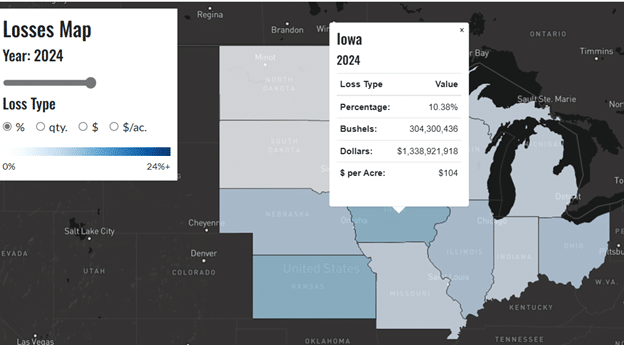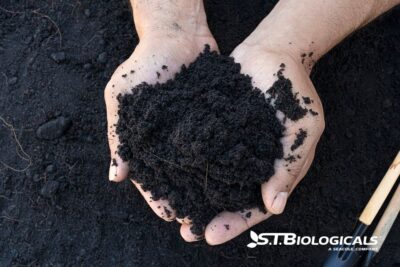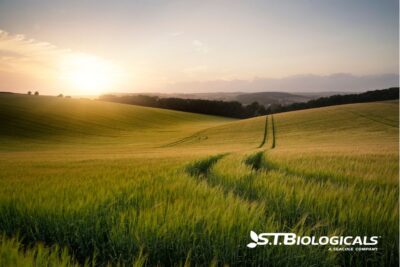Crop scouting is a crucial practice for row crops that enables farmers to detect issues early and make informed management decisions. It involves regular field monitoring to identify pests, diseases, nutrient deficiencies, and environmental stressors.
Traditional scouting methods rely on walking fields and visual inspections, but modern techniques incorporate drones, remote sensing, and AI-powered analytics to improve accuracy and efficiency.
The Economic Impact of Not Crop Scouting
For generations, farmers have walked their fields, looking for problems. Crop scouting techniques have changed over the years, but walking the fields is still a time-honored tradition. It’s the way farmers have been proactive in detecting fungal and pest issues before they cause an economic impact.
The economic impact of not scouting to detect issues early can be devastating. In 2023, corn farmers in Iowa lost an average of $104 per acre on corn crops. The Crop Protection Network Calculator provides some sobering information.
Early detection through crop scouting isn’t a luxury, but a necessity. As farms have gotten larger, catching issues early by walking the fields has become impossible. It’s still valuable for an overview and should not be abandoned for new technology. But personal observation can be augmented with drones, AI, and other tools.
Before you start shopping for high tech, let’s get clear on what crop scouting is and why it’s important.
What Are the Fundamentals of Crop Scouting?
We all know you aren’t just walking the field but walking in a pattern, usually a W, M, or a Z, for effective monitoring. A proactive approach to pest and disease control saves you money. Here are a few of the benefits of crop scouting:
- Reduce unnecessary pesticide application by identifying actual threats
- Improve crop yield by catching issues early
- Enhance sustainability by minimizing chemical overuse
- Save costs by preventing economic damage before intervention becomes expensive
What if you have 1000+ acres? Is physically walking the field an option? Often, ag operators are told they need AI, drones, and other high-tech crop scouting equipment. Nothing against those bright shiny objects. But consider the farm economy and what you already know how to use before jumping into new methods.
What do you need for traditional crop scouting techniques? Tools, a hand lens, soil probes, notebooks, and disease & pest ID guides. Your basic toolset for crop scouting will run you anywhere from $195 up to $1,580 if you get top of the line and all the advanced tools. The high end includes plant tissue testing kits, soil test kits, a weather monitoring station, and a GPS device for mapping scouting trails (you can use a free phone app for mapping your scouting trails).
The benefit of hand walking your fields is that you spot any abnormality, but it’s time-consuming, labor-intensive, and you can be wrong. And it’s hardly practical on large acreage. On the other hand, AI, drones, and other tools of the modern era are only as good as the operator. For precision agriculture scouting, combining both the old and the new ensures high accuracy and cost-effective interventions for any issues that pop up.
What are the common threats to a quality harvest and a good yield?
Fungal Threats in Row Crops are Common
In row crops, corn has the most fungal issues. That’s not to say soybeans, wheat, and other crops are immune. Wheat is susceptible to Fusarium head blight, leaf rust, and powdery mildew. Soybean fungal infections include Phytophthora root rot, charcoal rot, frogeye leaf spot, and white mold, to name a few.
Damping off and other issues are caused by soil-borne pathogens like Fusarium, Rhizoctonia, Pythium, and Sclerotinia. These fungi affect many row crops as well as specialty crops.
How to Identify Fungal Issues Before They Affect Yield
Crop scouting for fungal disease in corn focuses on the identification of leaf disease, stalk rots, and ear rots before they impact yield. To be successful with your crop scouting, you need to understand why these issues arise in the first place.
Detecting any early signs of crop disease is the key to success. Look for leaf discoloration, lesions, and wilting. On large fields, fungi have specific spore spread patterns. But with multi-crop plantings, it’s harder for fungi to spread.
Management strategies that include crop rotation, resistant varieties, and multi-crop field plantings are part of the solution. You also need to understand pathogen biology, monitor weather patterns, use scouting tools wisely, and assess disease severity. Integrated Disease Management (IDM) is a valuable addition to your successful farming strategy.
Once you identify the issue or issues, you need to evaluate whether fungicide applications are economically justified. When you’re incorporating regenerative farming principles and your soil is healthy, you may need a foliar nutrient application and not a fungicide. Pests and diseases don’t go after healthy plants. Microbial solutions for plant health include biological controls such as Trichoderma-based treatments.
Crop Scouting Saves Money and Protects Yields

Crop scouting is the best way to see if your IDM strategy is working. Prevention is the keystone of a successful farm. Regenerative farming practices that incorporate crop rotation, resistant varieties, biological controls, and crop scouting will often stop fungal infections before they have a chance to make any economic impact.
Using foliar nutrient applications and biological controls can increase your crop health and decrease the incidence of fungal disease. Fungicides are a last resort on a well-managed ag operation. Strategies that control plant diseases while minimizing environmental impact create greater farm profits.
The ST Biologicals mentors can help you improve your crop scouting strategy and source the foliar nutrient applications and biological controls required to protect your crop and help it thrive. Contact us today for support. We’re here to help you succeed. When soil speaks, we listen.

